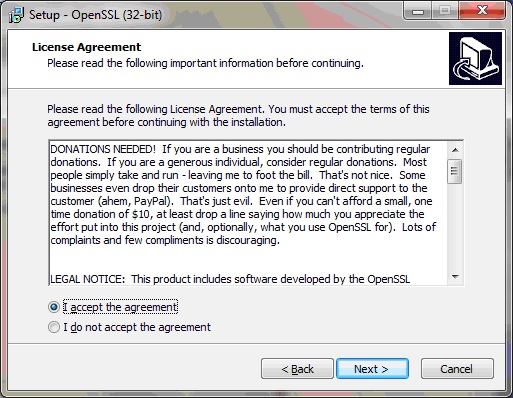

Raspbian comes with openssl already and the commands used below are console commands If. Std::cout << "SHA-256 hash of text file Hamlet.txt:" << std::endl The following process lets you sign and verify files using sha256. Std::cout << sha256( "Sample String" ) << std::endl << std::endl Std::cout << "SHA-256 hash of \"Sample String\" text:" << std::endl SHA256_Update(&sha256, buffer, bytesRead) While((bytesRead = fread(buffer, 1, bufSize, file))) Sprintf(outputBuffer + (i * 2), "%02x", hash) Void sha256_hash_string (unsigned char hash, char outputBuffer)įor(i = 0 i < SHA256_DIGEST_LENGTH i++) Std::string sha256( const std::string str ) Set the ‘Additional Library Directories’ section to specify the location of the OpenSSL libraries:Īll that remains is to try out the OpenSSL SHA-256 functionality with some sample code.įor this purpose I use some example code found on the StackOverflow site. Right-click your project folder and select Properties > Linker > General. Set the ‘Additional Dependencies’ section to include the ‘libea圓2.lib’ library file: Right-click your project folder and select Properties > Linker > Input.
OPENSSL SHA 256 UPDATE
Update the ‘Additional Include Directories’ section, so that your C++ project implementing the SHA-256 algorithm knows where to find the necessary header files: Right-click your project folder and select Properties > C/C++ > General.

In the Visual C++ section select ‘Empty Project’ and give your project a name eg ‘SHA256’: In Visual Studio create an empty project. Here I use Visual Studio 2010, but there is no reason these instructions cannot be applied to earlier or later versions. Step 2: Set up your Visual Studio environment Installing OpenSSL is straightfoward, but here are the screenshots showing the process of installing OpenSSL for Windows:
OPENSSL SHA 256 SOFTWARE
Specifically they recommend that you download and run the following executable as recommended for software developers by the creators of OpenSSL: See this web page for the list of all Win32-related implementations of OpenSSL.
OPENSSL SHA 256 HOW TO
This post shows you how to use SHA-256 as implemented by the OpenSSL open source project, and use it within Windows / Visual C++ environments to produce digital signatures of strings or files. An obvious application would be to apply such an algorithm to a file (text or binary) as a means of determining whether or not it has been tampered with. So why would such an algorithm be useful? Its utility lies in the fact that attempts to change the original data will almost certainly change the hash value returned by the algorithm. A hash function operates on an arbitrary amount of data and returns a fixed-size bit string, the cryptographic hash value. certificate.

The SHA acronym stands for Secure Hash Algorithm. request.csr -noout openssl sha256 openssl x509 -pubkey -in. Federal Information Processing Standard (FIPS). SHA-256 is a cryptographic hash function developed by the US.


 0 kommentar(er)
0 kommentar(er)
